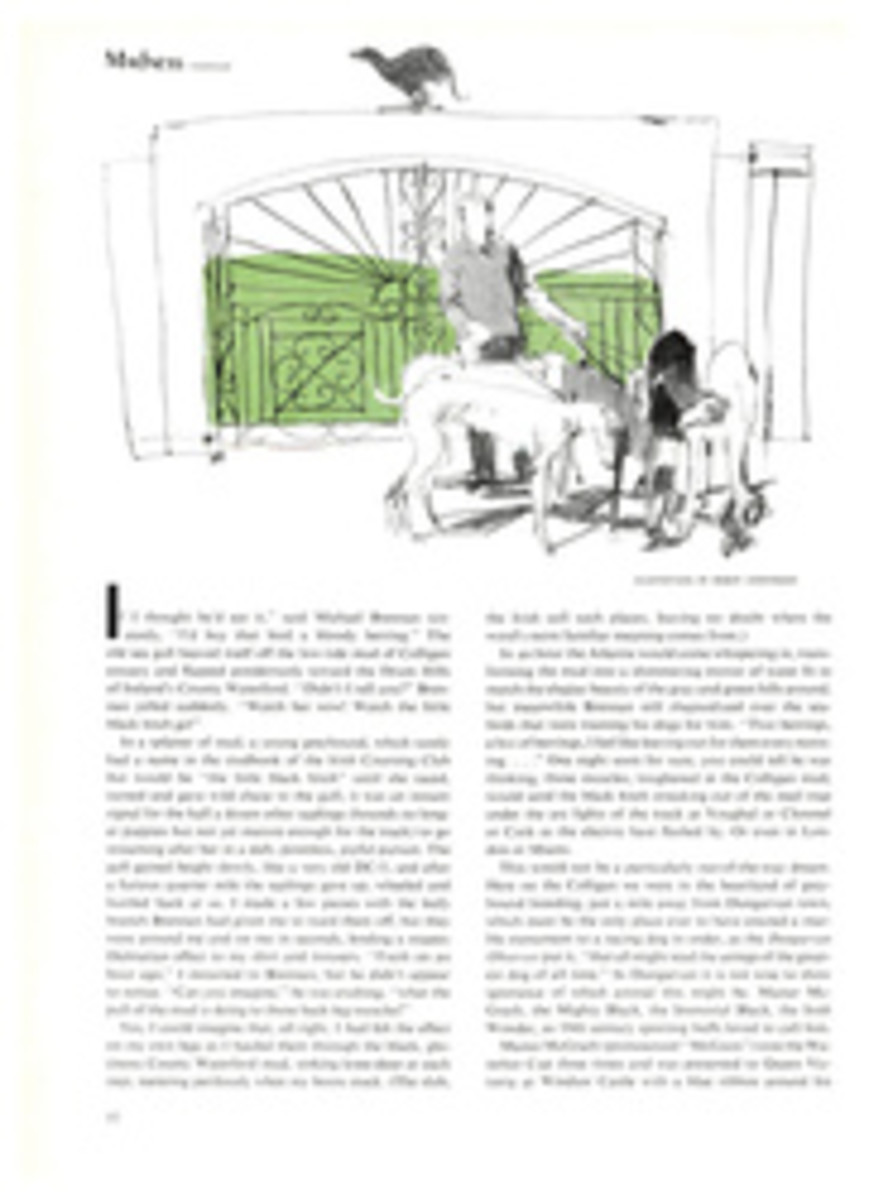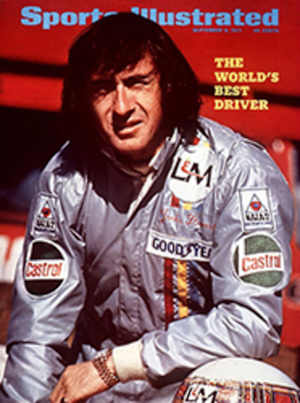
SCORECARD
BAD DEAL
The National Football League would like the public to believe that it is vigilantly safeguarding pro football from any possible taint. This image does not always coincide with the facts. Take the case of Johnny Robinson, an All-Pro safety for the Kansas City Chiefs. He owns half the stock in a corporation which last December bought a Kansas City swim and tennis club from one Edward P. Osadchey. As president of the corporation, Robinson signed a promissory note for $275,000 to be paid back to Osadchey and his wife at 8% interest over a nine-year period.
Osadchey, also known as Eddie Spitz, has two convictions, the most recent in 1964 when he and four others were convicted of conspiring to defraud the Government of taxes on alcohol while operating the very club Robinson bought. In 1950 Osadchey was identified by a federal grand jury as involved in six separate gambling operations in Kansas City. Last year he was one of 54 men listed by the Kansas City Crime Commission as "clearly members of the Kansas City Syndicate, fellow travelers, cronies or associates or dupes of the 'outfit.' "
Nonetheless, after an investigation following Robinson's request for league approval of the deal, the NFL "determined that the transaction [was] nothing more than a simple purchase of property and [that there was] no sufficient cause for taking drastic action or directing Robinson to divest himself of the property."
The NFL's investigation was conducted by Eugene Waechter, a former FBI agent who works for the league part-time. Waechter's other occupation is assistant to the president of Pro-Forma, Inc., which has a number of pro athletes, including 30 Chief players, under contract for commercials, endorsements, etc. The president of Pro-Forma is Jim Tyrer, the Chiefs' offensive tackle.
When questioned by Harry Jones Jr. of The Kansas City Times, Waechter said no conflict of interest was involved. Jim Kensil, the NFL's executive director, agreed, stating it was advantageous to have an investigator who was close to the players.
The Kansas City Crime Commission, which made its own investigation of the transaction, advised the NFL that the deal "was not in the best interests of professional football or the Kansas City Chiefs." The league's intemperate reply: "It is unfortunate that a volunteer organization should see fit to issue self-serving statements which tend to confuse rather than clarify the situation."
At the risk of being similarly rebuked, let us clarify. First, it is surely ill-advised to employ as an investigator one whose livelihood is so closely connected with those of the players he may be called upon to investigate. Even more to the point, it would seem indefensible to permit a player—especially one in as sensitive a position as safety—to head a company in debt to an underworld character like Osadchey.
WHERE'S THE SUPREME COURT?
The University of California and the University of Arkansas will open the football season at Little Rock on Sept. 11. In their game contract is a sentence that reads: "The players must be eligible under the rules of the National Collegiate Athletic Association and their two respective conferences."
Forget it. The sentence will be ignored. California plans to play Isaac Curtis, halfback, whose presence on Cal teams has caused the NCAA to place Cal on indefinite probation with full sanctions. Arkansas' athletic director, George R. Cole, says he will enter no objection if Curtis plays.
What happened is that California made a botch of Curtis' passage through the college board entrance exams, in which an athlete must establish to the NCAA that he can do 1.6 work in college. Curtis never did take the exam, but he has since done better than passing work, which is good enough for California. The NCAA, though, adamantly permits no exceptions to its 1.6 rule.
The oversight came to the attention of the NCAA about a year ago. In a meeting in January the NCAA infractions committee deprived California of points scored by Curtis in the 1970 NCAA track meet. He is a world-class sprinter with a legitimate 9.3 to his credit for the 100-yard dash. The loss of his points cost California its NCAA track title.
But California did not bar Curtis from football last fall nor from track again last spring. So, a week ago, the NCAA put California on indefinite probation until such time as it is found to be in compliance with the 1.6 rule.
If California were a member of the Southwest Conference it would be barred forever from using Curtis. But it is a member of the Pacific Eight, which holds: "There shall be no central enforcement agent or agency in this conference." The bylaws specifically prohibit the Pacific Eight executive director from any investigative or enforcement activities. If questions do arise, they are to be settled between the two schools affected. Only if they cannot agree is the case brought to the executive director, who then may present it at a conference meeting, where voting procedures begin.
And if it all seems like a mess, you are quite right.
HALITOSIS IN HARNESS
Harness-racing horses, like thoroughbreds, are tested for drugs, of course, but so are their drivers. The purpose is to find out if the driver has taken aboard enough alcohol to endanger others in the race. He is required to blow into a machine called a Breathalyzer and, if it registers .05% or more, he is reported to the paddock judge and denied permission to race that day. Sometimes he is fined, too, or set down from driving for a few days.
At The Meadows, a track in the hills of western Pennsylvania near Pittsburgh, Driver Al Jasperson came to the paddock, took his test and scored a reading of .095%, then insisted, against all the evidence, that he had not been drinking. Instead, he said, he had just sprayed his mouth with a breath sweetener—a "concentrated golden breath spray," no less. To prove it, he blew into the Breathalyzer a second time, whereupon the machine showed his breath had dropped to an acceptable .02%. The effect of the spray was wearing off, he assured the official. The latter, Sam Marcolini, tried the spray himself and hit a reading of .12%, but a mere .015% five minutes later.
Paddock Judge Joe Hutchison listened to the story, sprayed his mouth heavily and hit a remarkable .68%. In five minutes his reading had dropped to .04%.
The rule now is that "should any driver use the mouth spray as an excuse for having a positive reading, we would have him wait 10 minutes after the first reading before giving him a second test." Booze, it would seem, has more staying power.
ONE FOR THE BOOKS
Phil Jackman of the Baltimore Evening Sun, official scorer at an Orioles-Twins game, had a problem. Should he credit Gary Eisenberg, right-field ball boy for the Orioles, with an assist?
The Orioles were leading 3-1 in the fifth inning with a runner, Dave McNally, on first base when Don Buford lined a shot just inside the foul line. Umpire John Stevens signaled foul—but yelled fair.
Rich Reese, playing first for the Twins, chased the ball, but Eisenberg, noting the umpire's gesture, assumed the ball was foul and picked it up.
"Put it down," Reese screamed to the ball boy. "It's in play!" The boy dropped the ball; Reese picked it up and threw to the plate, where McNally was tagged out.
"The Orioles complained that the boy picked up the ball," Umpire Stevens said, "but I was so busy signaling fair that actually I didn't see him."
So the ball was fair, the runner was out—and Jackman scored the play 10-3-2.
KISS OF DEATH
The mosquito-plagued outdoorsman has something to look forward to, though his wife may not appreciate it. The National Geographic Society reports that garlic is death to mosquitoes and that entomologists are trying to find out just how it kills, with a view toward developing a better insecticide than types that are judged to be ecologically harmful.
Throughout its history, ever since the Crusaders brought it back to Western Europe, magical properties have been ascribed to garlic. Survivors of the Black Death believed they escaped because of the garlic they chewed. Some have held it to be an aphrodisiac and a cure for mad-dog bites, leprosy and athlete's foot. And Eleanor Roosevelt attributed her fine memory to the three chocolate-covered garlic pills that she ate each morning at breakfast.
A certain delicacy in the use of garlic is admired by gourmets. Queen Victoria's Italian chef chewed garlic, then breathed on his salads. Not for him that crude business of rubbing the bowl with it.
Try breathing some on the next mosquito you encounter.
FOR THE ILL-DRESSED SHUTTERBUG
It is a rare news photographer who goes to work looking as if he had his suits tailored on Savile Row. Or even as if he owned a suit. The thing is to wear gear that can accommodate all the gadgets that go with the trade and will not be unduly damaged while climbing telephone poles and dodging rhinoceroses.
But in Toronto's Maple Leaf Gardens, where employees are required to wear a black tie to some events, photographers who look as if they dressed hurriedly in the darkroom will henceforth be denied entrance.
"Some photographers appear at the Gardens in rather a slovenly condition," Stan Obodiac, publicity director, advised Toronto sports editors in a recent communiqué. "Since they work the prime section at the Gardens, they are more evident to the general public."
This sartorial stance is not altogether new to the Gardens. Rather it is a throwback to Conn Smythe, who built the arena and ruled as absolute despot of the Maple Leafs until 10 years ago, when he sold out to his son and some associates. Smythe insisted that his players wear shirts and ties whenever they appeared in public, even when they came to practice. Reporters who covered the hockey team were refused admission to dressing rooms unless they were attired to Smythe's taste. Only last year Coach John McLellan reprimanded reporters on the hockey beat for letting their hair grow long and not wearing ties.
Still, reporters are not photographers. The Leafs have conquered many adversaries in their turbulent history, but they may yet rue the day that they challenged such sensitive, artistic—not to mention aggressive—souls as press photographers.
KINDERGARTEN AT UNM
The University of New Mexico is offering the usual variety of noncredit evening courses this fall, but a new one is "spectator football." And while most courses, ranging from "adobe building" to "woodworking," cost $35 or more, this one is being introduced at a loss-leader price of $25. What's more, ladies can bring their husbands for only $10 extra. Or vice versa.
Bill Weeks, former head coach of the UNM Lobos, says he will approach the course "as if the students know nothing." He will begin with the various positions ("You be the halfback, Mrs. Pinkley") and walk the students through the various plays. Such arcane topics as onside kicks and Howard Cosell will be explained later.
ILLUSTRATION
THEY SAID IT
•Ed Murphy, assistant basketball coach at New Mexico State, on modern vs. old-time recruiting: "Twenty years ago all you had to do was tell a mother how good her pecan pie was and you got her seven-foot son and a pie a month for four years. Now you take Mom and Dad to the Waldorf, where they order lobster because they have already tried everything else on the menu with 16 other coaches."
•Gene Shue, coach of the Baltimore Bullets, on radio broadcasts of hockey games: "It's like listening to a description of one continuous mistake."

